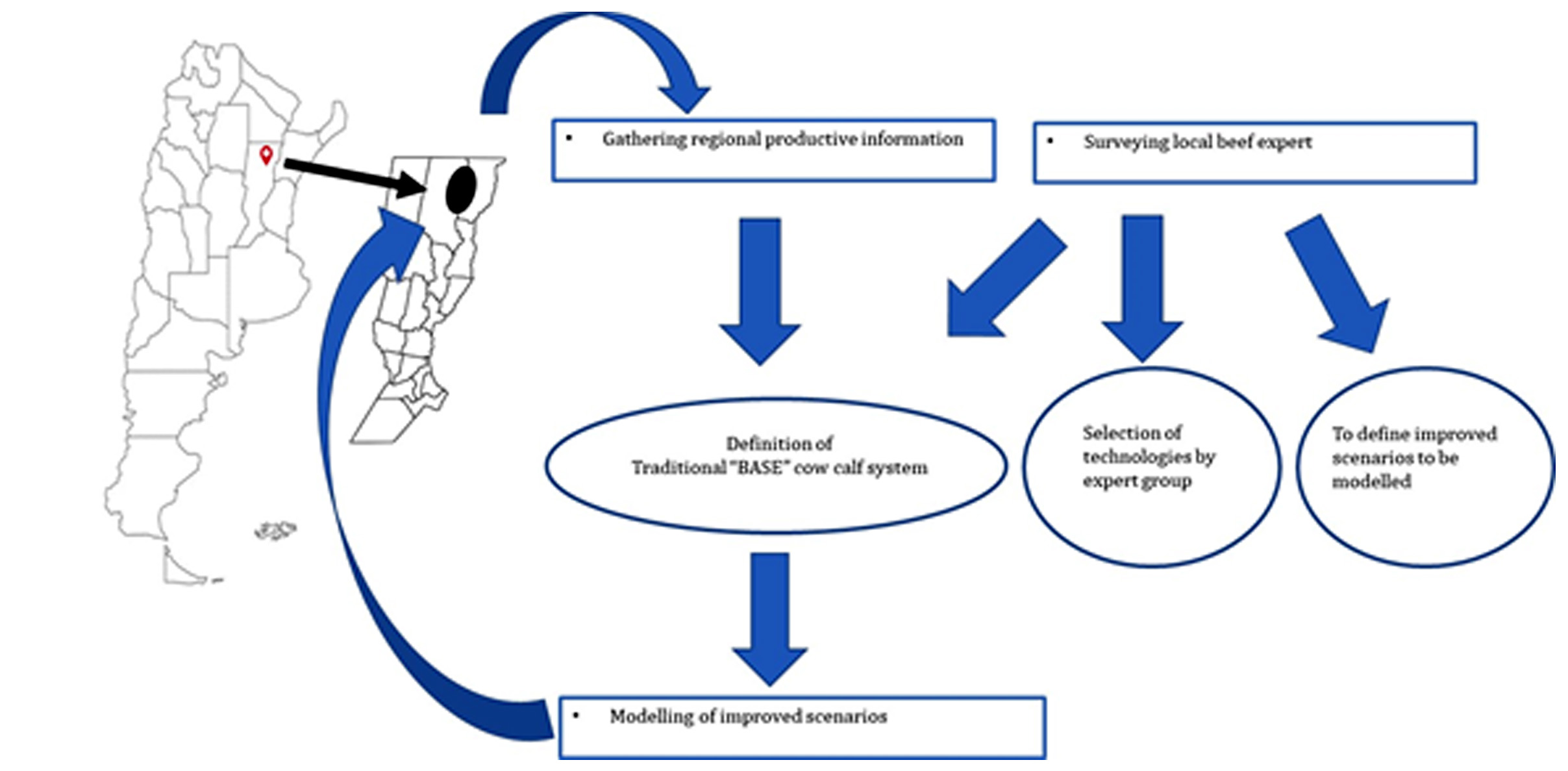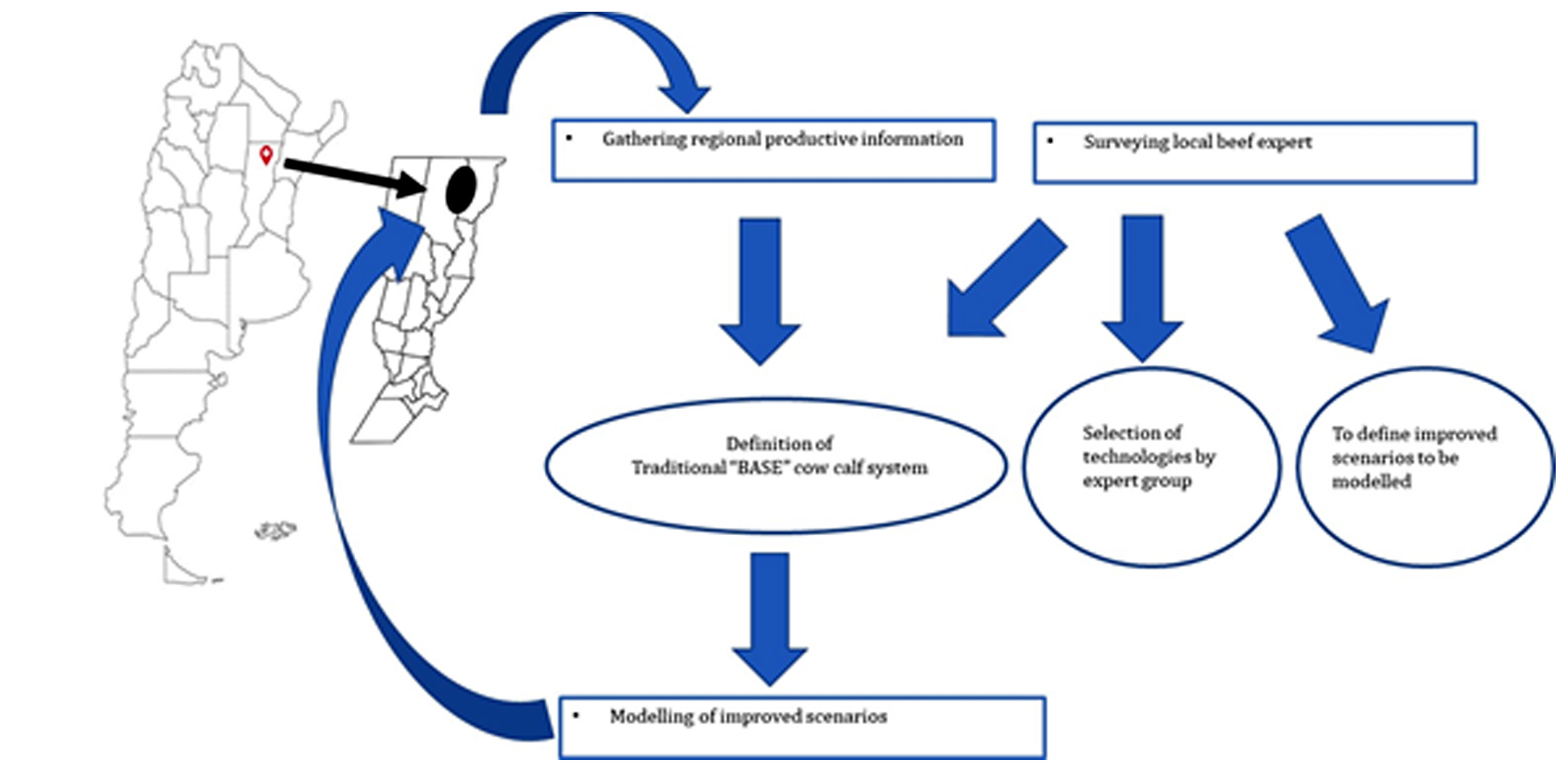Traditional cow-calf systems of the northern region of Santa Fe, Argentina: current situation and improvement opportunities
DOI:
https://doi.org/10.48162/rev.39.127Palabras clave:
producción de carne, encuesta, tecnologías, simulación, oportunidadesResumen

Cow-calf systems are at the core of Argentina´s significant national beef industry. The objectives were: i) to characterize the productive state of traditional cow-calf systems, named BASE, from the northern region of Santa Fe province, ii) to identify technologies for the productive improvement of the BASE system, and iii) to quantify the productive and economic impact of the adoption of the identified technologies. To characterize the BASE system, the available published data were systematized and validated in a workshop with leading regional experts in the field. To identify the technologies for improvement, a survey was conducted among regional farm advisors. Finally, to quantify the impact of adopting improvements in the BASE system, a modelling study was conducted. The results showed that traditional cow-calf systems have low productive and reproductive efficiency (45 kg LW ha-1 year-1 and 48% weaning rate) and little adoption of herd management and forage production technologies. The technologies identified were grazing management, training of farmers and farm staff, and seasonal mating. The modelling study showed that improvements in the production and use of forage and herd management practices would increase beef production and the gross margin of the BASE system by 70% and 96%, respectively.
Highlights:
- Participatory modelling was used to characterize and evaluate the traditional cow-calf system from northern region of Santa Fe province and prioritize improvement technologies for potential adoption.
- Cow-calf systems from the northern region of Santa Fe province have little adoption of technologies and low productive and reproductive efficiency (45 kg LW ha-1 year-1 and 48% weaning rate).
- Technologies prioritized by regional farm advisors of cow-calf systems were grazing management, training of farmers and farm staff, and seasonal mating.
- The combination of herd and feeding strategies would increase beef production and gross margin of traditional cow-calf system by up to 70% and 96%, respectively.
Descargas

Descargas
Publicado
Cómo citar
Número
Sección
Licencia
Derechos de autor 2018 Revista de la Facultad de Ciencias Agrarias UNCuyo

Esta obra está bajo una licencia internacional Creative Commons Reconocimiento-NoComercial-CompartirIgual 3.0.
Aquellos autores/as que tengan publicaciones con esta revista, aceptan las Políticas Editoriales.










.jpg)




